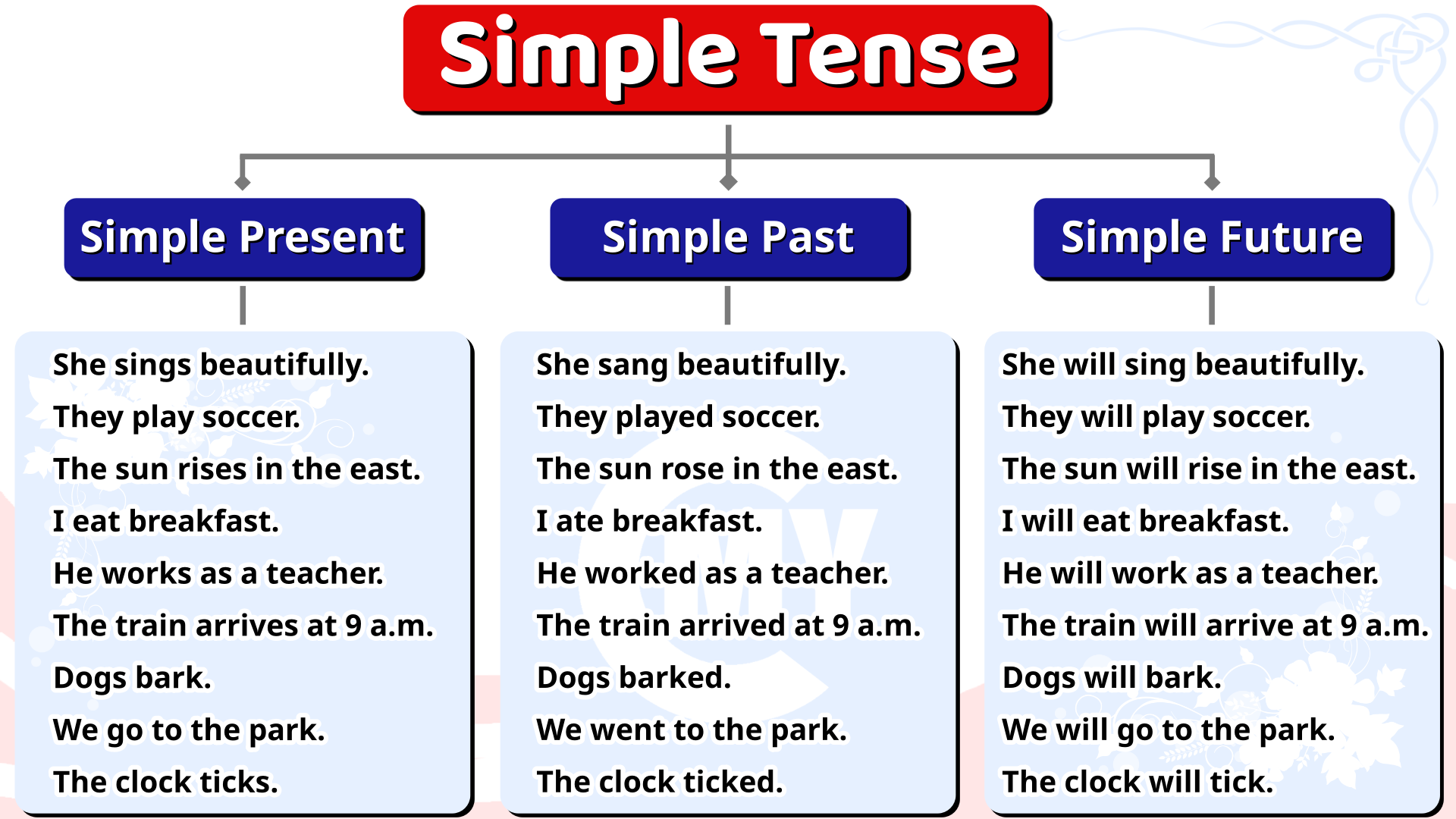What is Simple Tense?
The term “simple tense” is not a commonly used grammatical term. However, it can be understood as referring to the basic verb tenses in English Grammar, which include the simple present, simple past, and simple future.
- The simple present tense is used to describe actions or events that are currently happening or are generally true. For example: “She sings beautifully.”
- The simple past tense is used to describe actions or events that have already happened in the past. For example: “I walked to the store.”
- The simple future tense is used to describe actions or events that will occur in the future. For example: “We will go to the beach tomorrow.”
These three tenses are considered simple because they do not involve any additional auxiliary verbs or verb forms. They are the most basic and straightforward ways to express time in English sentences.
What is Simple Sentence?
A simple sentence is a sentence that consists of just one independent clause. It typically contains a subject, a verb, and expresses a complete thought. It does not contain any dependent clauses or complex grammatical structures. Here are a few examples of simple sentences:
- She runs.
- They laughed.
- The sun shines.
- I like pizza.
- He plays guitar.
In each of these examples, there is a subject (e.g., “she,” “they,” “the sun,” “I,” “he”), a verb (e.g., “runs,” “laughed,” “shines,” “like,” “plays”), and a complete idea or action expressed. Simple sentences are often used to convey clear and concise statements. However, they can be expanded and combined with other sentence types to create more complex and nuanced expressions.
Difference between Simple Tense and Simple Sentence
The terms “simple tense” and “simple sentence” refer to different aspects of grammar.
- Simple Tense: Simple tense refers to the basic verb tenses in a language, such as simple past, simple present, and simple future. It focuses on how the verb indicates the time of an action, event, or state. For example, “I walked” (simple past tense), “She sings” (simple present tense), or “We will go” (simple future tense). Simple tenses deal with verb conjugation and time relationships.
- Simple Sentence: A simple sentence, on the other hand, is a sentence structure that consists of only one independent clause. It contains a subject, a verb, and expresses a complete thought. It is a self-contained unit of meaning. For example, “She runs,” “They laughed,” or “The sun shines.” Simple sentences can be short or longer, but they do not contain dependent clauses or complex grammatical structures.
In summary, simple tense refers to the verb forms used to indicate time, while a simple sentence refers to a sentence structure with one independent clause expressing a complete thought. These two concepts are distinct and address different aspects of grammar.

Good Like Grammar